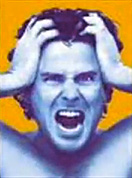Electronic Highways
Damn this traffic jam
Damn this traffic jam—How I hate to be late.
It hurts my motor to go so slow—Damn this traffic jam.
Time I get home, my supper’ll be cold—Damn this traffic jam.
—“Traffic Jam” song by James Taylor
According to the Texas Transportation Institute (TTI), traffic congestion in 2007 caused American drivers to travel 4.2 billion hours more and purchase an extra 2.8 billion gallons of fuel for a congestion cost of $87.2 billion—an increase of more than 50 percent over the previous decade. Add to this expense the mental aggravation caused by stop-and-go traffic and the bodily discomfort that comes from sitting in a car too long, and you can see why they say you never really learn to swear until you learn to drive.
Buffalonians may complain about—and swear at—a lot of things, but traffic congestion shouldn’t be one of them. The 2009 Urban Mobility Report put out by the TTI doesn’t have Buffalo ranked in the top 50 in any of the categories they measured in 2007 (scoring here isn’t like golf, a higher number is better). Here’s how Buffalo placed among 439 American urban areas in the following categories:
• Annual delay per traveler: 79. Los Angeles was ranked first.
• Wasted fuel per traveler: 77. Los Angeles was ranked first.
• Total congestion cost: 65. Los Angeles was ranked first.
Buffalo’s out-migration has its pluses—less automobile traffic being one of them—but the ex-Buffalonians who reside in cities such as Atlanta, Miami, Houston or San Diego now must spend much of their lives in slow-moving traffic lanes. Perhaps these folks are reading the slew of new books dealing with the topic of traffic congestion while they are idling in their cars. One of the more popular books on the subject is Tom Vanderbilt’s “Traffic: Why We Drive the Way We Do (and What it Says About Us). Vanderbilt’s book explores such things as why congestion pricing (charging extra to use roads during rush hours) works, but street signs don’t; why late lane-merging drivers aren’t the ogres you think they are; and why most crashes happen on sunny, dry days and not overcast, wet ones.
In his book “Fighting Traffic: The Dawn of the Motor Age in the American City,” author Peter Norton documents the battle between pedestrians and the automobile over property rights to American streets and roads.
“Gridlock: Why We’re Stuck in Traffic and What To Do About It” by Randal O’Toole celebrates the egalitarian effects of automobile travel on American society. O’Toole is opposed to any federal transportation policy that focuses attention and money on mass transportation, and feels that the billions of dollars currently proposed for high-speed rail and rail transit are just wasteful spending; he believes that private enterprise and the individual states are better equipped to solve America’s transportation problems than the federal government.
A more extensive listing of “traffic” books can be found by searching BISON, the UB Libraries’ online catalog. In addition, the following library databases will be useful for anyone wanting to do research on the subject of traffic congestion and traffic engineering:
• TRIS Online (Transportation Research Information Services).
—Don Hartman, University Libraries


Reader Comments